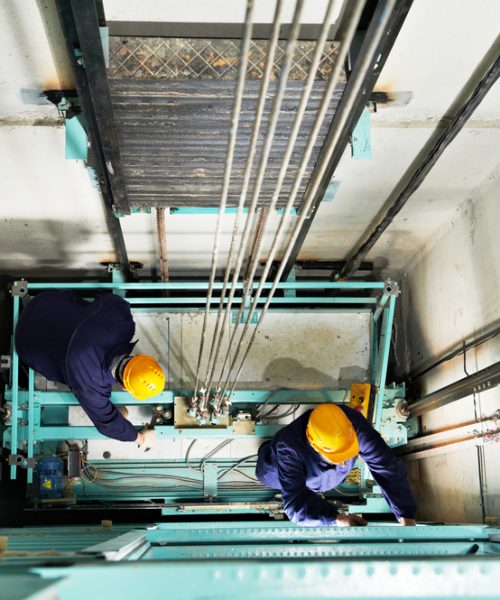Discover Lift Servicing Near Me-- High Quality Maintenance Solutions for Optimal Lift Performance
Discover Lift Servicing Near Me-- High Quality Maintenance Solutions for Optimal Lift Performance
Blog Article
Troubleshooting Tips for Common Issues With Handicapped System Lifts
When it comes to guaranteeing the smooth procedure of impaired system lifts, running into usual problems can interrupt the functionality and ease of access they provide. Let's explore some functional suggestions to address these common troubles and make sure the appropriate functioning of disabled system lifts.
Power Supply Issues
When experiencing power supply problems with disabled system lifts, the first action is to systematically examine and troubleshoot prospective sources of power disturbance. If the power source is verified to be functioning, proceed to inspect the power cord for any type of signs of damage or put on that could be creating an interruption in the power supply.

Control Board Troubles
Control board malfunctions on handicapped system lifts can significantly restrain their operational performance and pose safety threats to customers. The control panel functions as the central user interface for running the lift, enabling customers to start activity, control rate, and handle quits at various levels. When the control board runs into issues such as unresponsive buttons, unpredictable habits, or screen breakdowns, it can interfere with the whole lift procedure.
One common problem with control panels is electrical faults, which may result from electrical wiring problems, power surges, or element damage. These mistakes can cause the control panel to malfunction or become unresponsive, making it challenging for individuals to operate the lift safely. Additionally, environmental elements like dampness or severe temperature levels can also impact the control board's efficiency, causing possible failures.
To address control panel problems effectively, regular upkeep checks and assessments are necessary. Consistently cleansing the control board, checking electrical wiring connections, and ensuring correct calibration can aid stop malfunctions and ensure the lift runs efficiently. In situations of persistent concerns, getting in touch with a certified specialist for repairs or substitutes is suggested to maintain the lift's capability and security for users.

System Stuck or Jammed
In circumstances where the impaired platform lift experiences a platform stuck or obstructed, immediate interest and correct troubleshooting are important to make certain the lift's functionality and customer safety. When experiencing a system that is stuck or obstructed, the primary step is to stop any kind of ongoing procedure of the lift to avoid more damages or safety dangers. Next off, inspect the location around the system for any type of blockages that might be causing the jam. It is necessary to look for particles, objects, or any kind of various other items that could be blocking the smooth motion of the system.
In such cases, it is advised to speak to a licensed specialist or the lift manufacturer for professional aid in settling the problem. Trigger and correct resolution of a stuck or obstructed platform is essential to keep the lift's functional efficiency and ensure customer security.
Security Sensor Malfunctions
An important component of handicapped system lifts, safety sensors play an important duty in making sure individual defense Going Here and lift procedure. If repairing the sensing units does not resolve the issue, seek advice from a certified service technician to conduct a comprehensive evaluation and repair work to preserve the lift's security and performance. Normal upkeep and timely resolution of safety sensing unit breakdowns are important for the risk-free operation of disabled platform lifts.
Uncommon Sounds or Activities
When running an impaired system lift, listening to any type of unusual noises or movements is crucial for recognizing potential concerns that might impact its performance and safety. Uncommon sounds, such as grinding, shrilling, or clunking sounds, can suggest problems additional resources with the lift's mechanical parts, such as damaged gears, loose screws, or damaged bearings. These issues, if left unaddressed, might bring about malfunctions or even full failure of the lift.
Similarly, uncommon motions of the system, such as jerking, trembling, or unexpected stops, must not be neglected (elevator maintenance). These movements can be a sign of electric issues, hydraulic system issues, or irregularities in the lift's programs. Without delay checking out and dealing with these unusual movements can stop crashes and make certain the ongoing safe procedure of the system lift
In case of experiencing unusual sounds or activities, it is recommended to stop utilizing the lift instantly and contact a certified service technician for inspection and repair work. Regular upkeep and prompt troubleshooting of any unusual signs can help lengthen the life expectancy of the impaired platform lift and make sure the safety and security of its users.
Conclusion
Finally, repairing common problems with handicapped system look at here now lifts requires determining and dealing with power supply problems, control panel concerns, platform jams, safety sensor breakdowns, and uncommon sounds or activities. By complying with appropriate maintenance and troubleshooting treatments, users can make certain the safe and effective operation of system lifts for people with handicaps.
Report this page